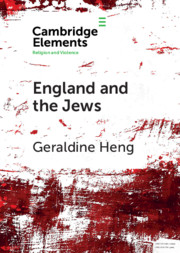Element contents
England and the Jews
Published online by Cambridge University Press: 19 November 2018
Summary
Keywords
- Type
- Element
- Information
- Online ISBN: 9781108646994Publisher: Cambridge University PressPrint publication: 29 November 2018
Bibliography
- 11
- Cited by



